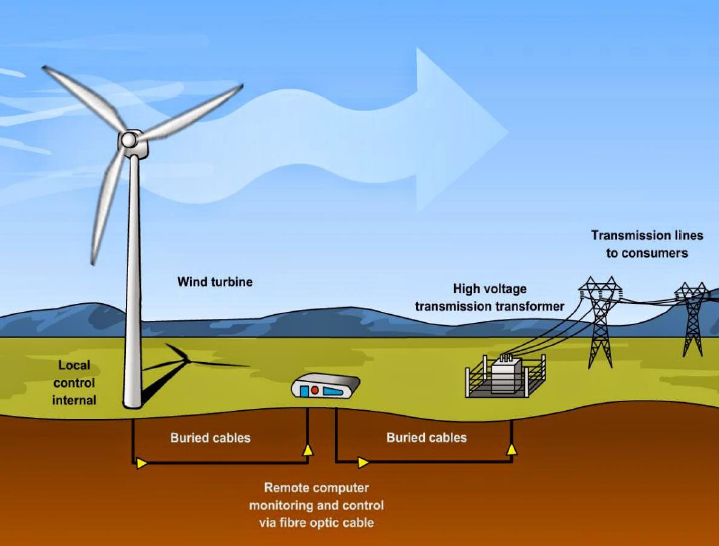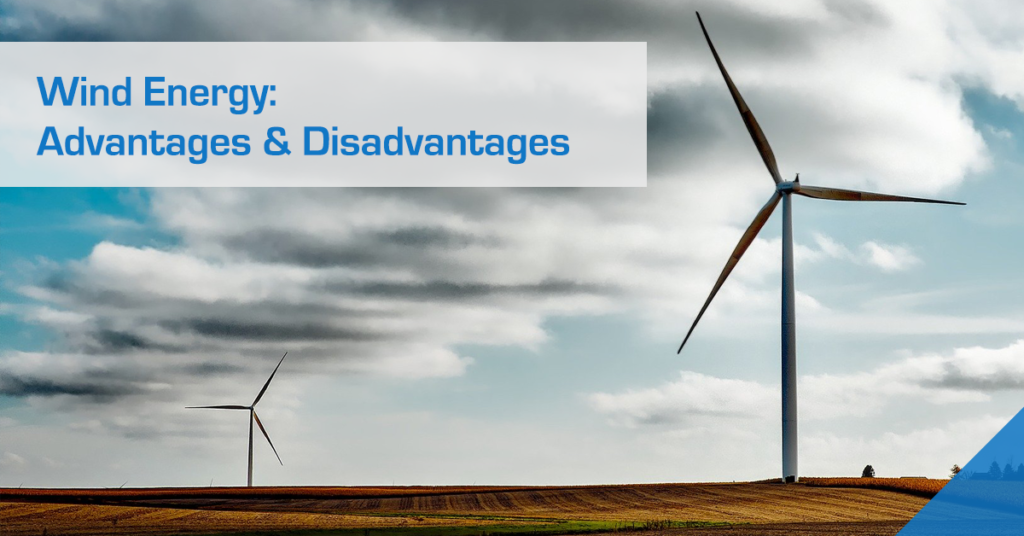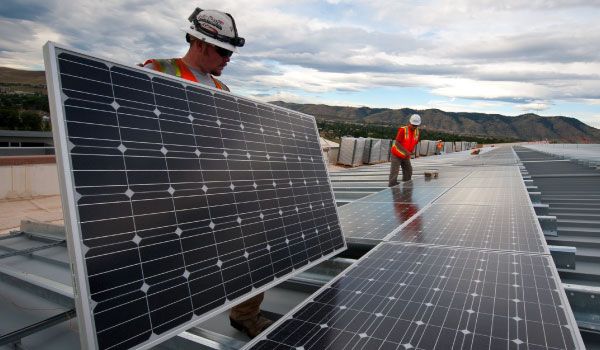
What exactly is wind energy?
Wind energy is a kind of renewable energy that is obtained by converting the mechanical energy created by wind turbines into electrical energy. This process is known as “harvesting” the wind’s energy. In a scientific sense, wind is produced by the sun in the form of a by-product of temperature differences. Wind is produced as a result of the unequal heating of the atmosphere, mountains, and valleys, as well as the movement of the earth around the sun.
Pros and Cons of Wind Energy
Wind energy, like all other renewable energy sources, comes with its fair share of benefits and drawbacks. For various reasons and under various conditions, some forms of renewable energy are more effective in certain locations of the globe. Because of this, customers need to be aware of which option is most suitable for the region in which they live.
Advantages of Wind Energy
Wind energy is a viable alternative to solar energy in many regions of the globe because, unlike solar energy, it does not depend on the amount of direct sunlight received during the generation process. This makes wind energy an attractive choice.
1) Free Fuel
There is no need for fuel in wind farms since the wind turbines themselves operate solely on the electricity that is produced by the wind. For the turbine to continue operating once it has been built and placed, it is not necessary to be fuelled or linked to a power source. This results in a reduction in the cost of continuing to operate large-scale wind farms compared to the cost of operating other sources of renewable energy, which often need an investment of some kind of energy.
2) One of the Most Environmentally Friendly Types of Energy
Unlike other forms of energy generation, using wind turbines does not result in releasing greenhouse gases into the atmosphere. The only time that wind power inadvertently contributes to the production of greenhouse gases is when the wind turbines themselves are being manufactured, transported, and installed. Wind power in the United States provides an endless supply of energy that may be used to illuminate houses and businesses.
3) Recent Developments in Technology
The most recent technological developments have transformed early ideas for wind turbines into very effective energy harvesters. Because turbines are available in such a broad range of sizes, the market for them has expanded to include a wider variety of enterprises as well as consumers who want to use them at home on bigger lots and plots of land. As technology advances, so do the capabilities of the building itself, resulting in designs that produce even more power, operate more quietly and safely, and need less maintenance.
4) Does Not Interrupt the Operations of Farmland
Wind turbines that generate electricity may be constructed by energy providers on farmland that already exists, and the owners of the farms can be paid via contracts or leases to allow construction on their land. This is a fantastic advantage to farmers who might use some more revenue, and since the footprints of wind turbines take up very little area at the ground level, it does not impede the productivity of their farm in any way. Wind power facilities occupy less than 1.5% of the contiguous land area in the United States at the current time. If landowners and government land managers are willing to make the effort, however, there is a significant amount of room for development in the nation’s interior, where plains and acreage are abundant suitable for raising cattle.
5) Decreases the Reliance That We Have on Fossil Fuels
Not only does the use of fossil fuels contribute to climate change, but the energy that is derived from them will eventually become scarce. As long as the sun continues to warm the earth, there will always be an abundant supply of wind. [4] In addition, building and investing in technology that can only operate on a limited resource—one that we may run out of within our lifetimes—is a horrible waste of human capital, corporate monies, and public funds. This is because the resource is finite.

Disadvantages of Wind Energy
Even though wind power is a renewable and more environmentally friendly kind of energy, it is not without its share of drawbacks and constraints.
1) Poisonous to Some Forms of Wildlife
It is well knowledge that wind turbines provide a danger to the local fauna. When wind turbines are rotating, the blades that revolve on the fan-like structure may cause injury or death to flying birds and bats if those animals collide with the blades. These animals’ habitats or migration routes may cross over them. Concerns have been expressed by fish and animal conservation organizations over the mortality of birds and bats that have occurred at wind farm locations. This has led to the topic of controversy. [5] The species living on the ground may also be harmed by the noise pollution caused by the spinning of the blades and the wildlife that flies through the air. Other things, like skyscrapers and wide windows, are similarly harmful yet continue erecting without scrutiny or comparable uproar. Wind turbines may be a concern for animals, but other things, such as skyscrapers and large windows, can also be a problem.
2) Noisy
Wind turbines may produce a significant amount of noise, so they are often located in relatively rural locations with a low population density. There may not be a problem with noise emanating from the turbine if it is situated in an area such as offshore. As a result of advances in technology, it has been shown that more recent designs lower the number of noise complaints and have a much quieter presence.
3) A High Initial Investment Cost
You can probably picture that these enormous buildings may reach heights of several hundred feet and need a significant initial financial investment. It is necessary to make additional investments in the construction of underground power lines in order to transport the electricity generated by wind turbines located in rural regions to more densely inhabited areas such as towns and cities. Wind energy provides a limitless supply of electricity as long as there is wind, but the initial installation and construction stage accounts for the bulk of the cost. After that, however, the cost per unit of energy produced is much lower.
4) Unreliable and Unpredictable in Behavior
Wind power is plagued by a phenomenon known as intermittency, which refers to a disturbance brought on by the unpredictable nature of the wind itself. Because the wind may blow at a wide range of velocities, it is difficult to estimate how much energy it can accumulate at any particular moment. This indicates that towns and energy providers need to be prepared with an energy reserve or alternate sources of electricity if the winds do not blow for extended periods.

Providing Support for Renewable Sources of Energy
Our options for environmentally friendly forms of energy will continue to expand in tandem with the development of new technologies. JustGreen is a straightforward energy choice that can be added on to any of our pre-existing plan options. When you pick green energy solutions such as JustGreen, you are balancing the amount of energy you use by purchasing renewable energy credits, which come from sources such as wind, hydro, and solar energy that are considered to be environmentally friendly.
